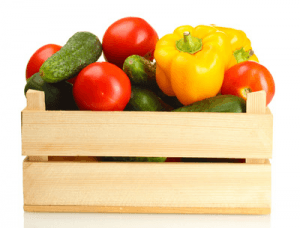
There’s no better time than summer to enjoy the freshest, healthiest, most fabulous food grown in gardens and local farms. If your backyard garden isn’t already working overtime, a Community Supported (or Shared) Agriculture membership is a great alternative or complement.
 The rise in food awareness and its sources has increased the interest in and number of CSAs, making them more accessible and convenient than ever before.
The rise in food awareness and its sources has increased the interest in and number of CSAs, making them more accessible and convenient than ever before.
A bit of history
CSAs were introduced to North America in the mid-1980s. Farmers and consumers join to support seasonal food from local farms–the farmer grows the crops, and consumers share the costs of supporting the farm. Members purchase a share, usually in advance, of the season’s harvest.
The cost is based on the length of the season, which crops are grown, and labor expenses. Members pick up or receive their weekly share, typically a box of just-harvested vegetables, a selection that will vary from month to month.
Modern CSA offerings
Today’s CSA has more flexibility and variation than those inaugural organizations more than 20 years ago. As numerous and successful as they have become, CSAs now design themselves around the unique needs of their communities, which means more options and choices for consumers.
Payment is one way they meet these needs. It’s still common to pay for the entire season upfront, but many CSAs now offer monthly payments, and some even accept food stamps in an effort to make fresh produce accessible to all community members.
Now, many CSAs allow members to adjust their share size according to family size and needs. One of the most exciting offerings is the market-style option, where members may assemble their own boxes rather than receive a pre-selected variety.
With the addition of other products, such as honey, eggs and cheese from partnering farmers, some CSAs now resemble a farmers’ market experience.
Joining a CSA has always meant support for local farms and sustainable growing practices. With all of these current offerings, there’s no better way to bring a healthy variety of local foods into your home while building a likeminded community.
– Environmental Nutrition
Reprinted with permission from Environmental Nutrition, a monthly publication of Belvoir Media Group, LLC. 800-829-5384. www.EnvironmentalNutrition.com. (c) 2012 BELVOIR MEDIA GROUP DISTRIBUTED BY TRIBUNE MEDIA SERVICES, INC.

